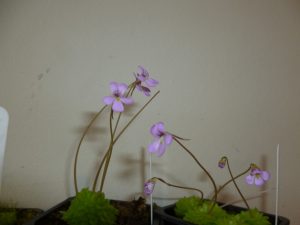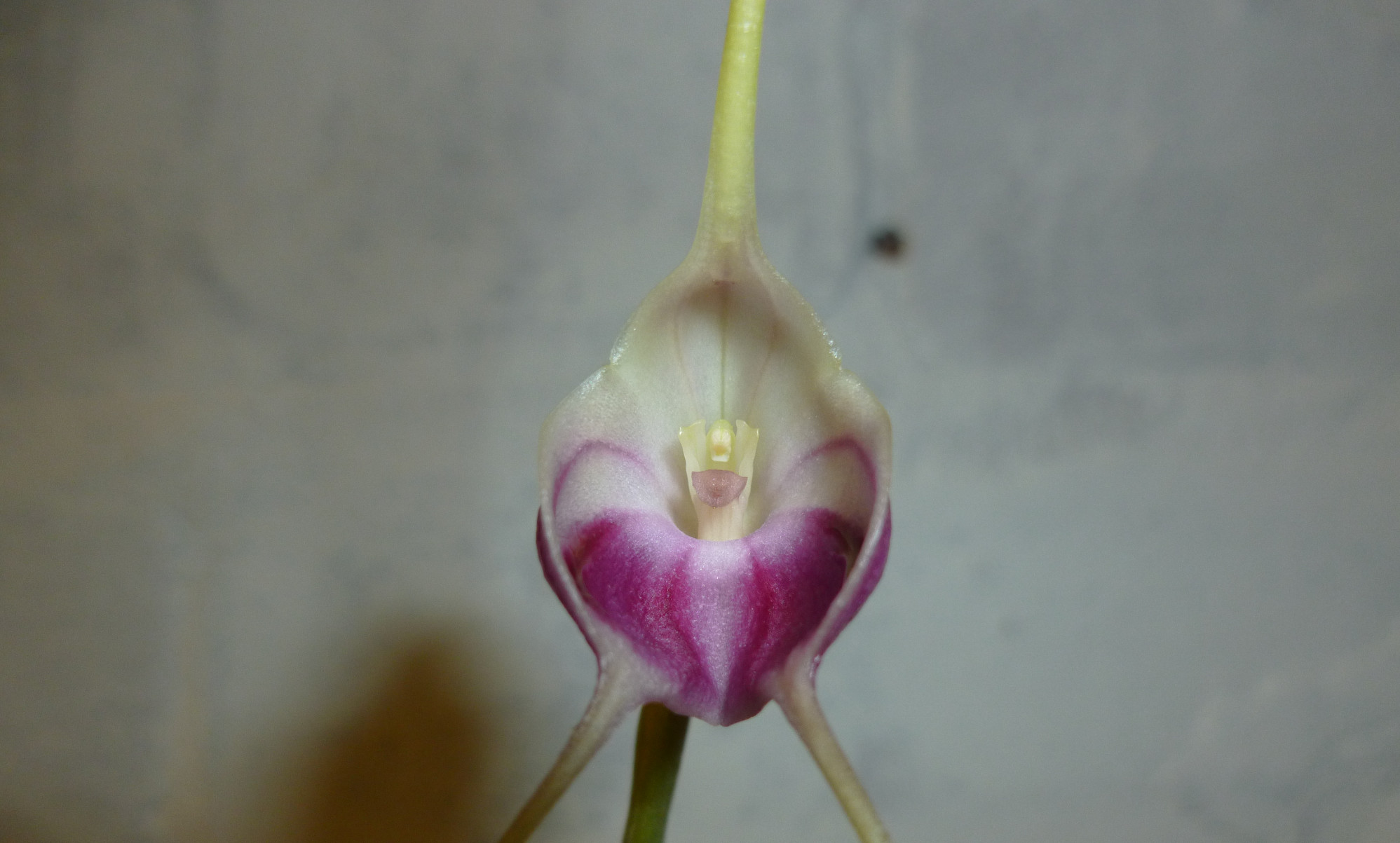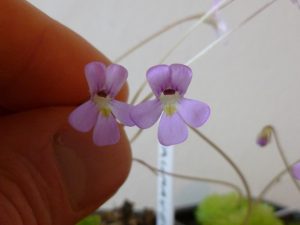I should probably call this post IANOTNDIPOOTV (I am not a Taxonomist, nor do I play one on TV). In the orchid world, I read articles and have seen references to how annoyed some growers get when taxonomists mess around with the names of plants. Until today, I’d not really understood what all the fuss was about, I mean, surely the work of writing a new label or two over the course of a year is a small price to pay. Especially if you’re as anal as me about having things correct. I realise the details below may do nothing other than highlight my own ignorance, but from my trawlings online, it seemed the following is still unclear to a number of growers.
I’ve written below about how the autumn and winter of last year (2017) hadn’t been great for my Pinguicula growing, but from December things are looking up. The plants should be dormant and indeed most are looking like they have winter growth (more succulent looking leaves, less curled and dewy) and those species that form tight buds like my gypsicolas are indeed in bud form. Even more extreme example is Pinguicula acuminata – a month ago it had lost most of its broad sticky summer leaves and formed a tight little bud. See pic below, now its lost even that single remaining leaf and is buried in its winter bud.

I like this species a lot and its grown well for me, if a little slowly, over the last year. Despite the dormancy, a number of my pings are flowering profusely in winter. Including species of Pinguicula esseriana and Pinguicula jaumavensis.

Which leads to the meat of the article – One of these flowers is my esseriana and one is the jaumavensis. Identical.
Luckily I had another jaumavensis in flower also shown below. This one did show some differences from the others. Trouble is – they’re both from the same original batch of plants. So assuming I’ve actually been sold the correct things – whats going on?

The species are no doubt very similar so I first turned to google. The International Plant Names Index (ipni.org) shows both as distinct species with no registered synonyms. Kew online also shows data for both as distinct species and indeed refers back to IPNI.
On pinguicula.org (http://www.pinguicula.org/pages/plantes/pinguicula_jaumavensis.htm) the jaumavensis flowers look a good match for what I have but they seem to be damn near the same on the esserina page (http://www.pinguicula.org/pages/plantes/pinguicula_esseriana.htm) as well.
The very excellent Mexican Pinguicula guide published by the AIPC (http://www.aipcnet.eu/Carnivorous_docs/AIPC_Special_Issue_3.pdf) shows two distinct species as well, the flower pictures attached to each only show the most subtle differences.
Giving up on the internet, I turned to the book Pinguicula of Latin America by Andreas Fleischmann, Aymeric Roccia, Oliver Gluch, Paul Temple, Stan Lampard, and Stewart McPherson which says quite clearly that jaumavensis is a synonym of esserina.
Oliver Gluchs website goes in to a bit more detail (translated from the German); “In the plants that brought in the 1980s, the German botanist Paul Debbert from a collecting trip from Mexico and described in 1991 as a new species under the name P. jaumavensis , it is only a synonym of P. esseriana . The plants are also from the same mountain range as the type plants of P. esseriana , only about 20 km further north.”
So I’m left wondering which is it? Do I have an esserina masquerading as a jaumavensis, a jaumavensis pretending to be a esserina or should I just label all of them P.esserina…? Or even should the labels should read P.esserina and P.esserina var ‘jaumavensis’. The evidence from pictures seems clear and agrees with a recent book from a number of well respected people, but does that then mean Kew is holding/showing incorrect data? Either way – I love growing these charming little plants and digging into this has passed the time whilst suffering from a pretty horrible cold.

